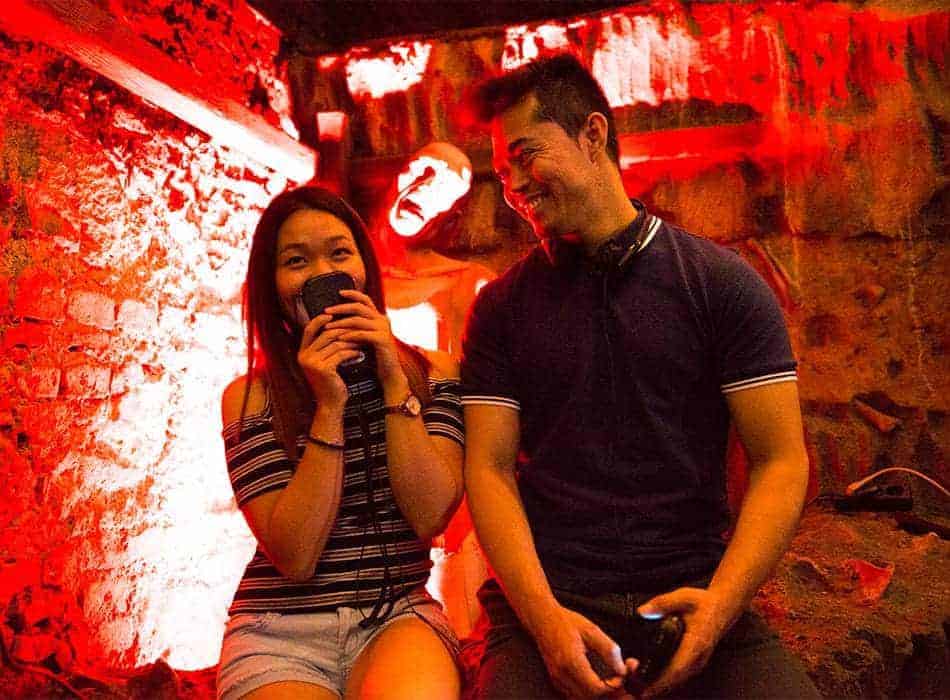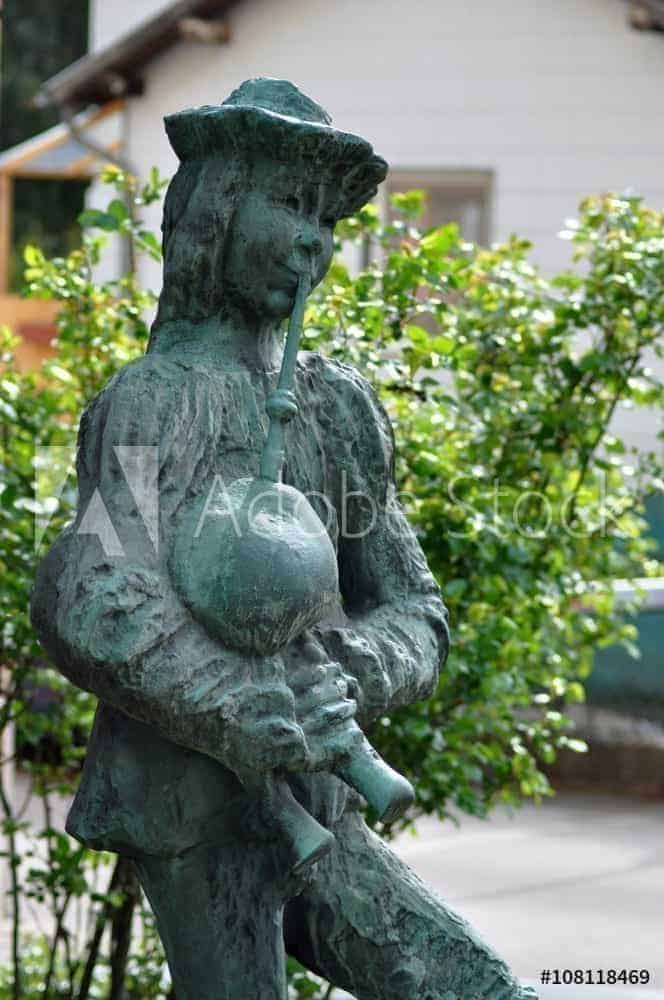This website uses cookies
We use cookies to personalize content and ads, to provide social media features, and to analyze traffic on our website. In addition, we use tracking tools such as Matomo and/or Google Analytics to collect anonymous usage data. You can block tracking on our Privacy Policy page. We also share information about your use of our website with our social media, advertising, and analytics partners. Our partners may combine this information with other data that you have provided or that has been collected as part of your use of the Services. For more information on how Google processes your data, please visit the Google Business Data Responsibility page.
Data Protection
This website uses cookies to offer you the best possible user experience. Cookie information is stored in your browser and enables functions such as recognizing you when you return, and helps our team understand which sections of the website you find most interesting and useful.
Strictly Necessary Cookies
Strictly necessary cookies should always be enabled to save your cookie settings.
Marketing & Statistics
This website employs tracking tools such as Matomo and/or Google Analytics to collect anonymous data, for example, regarding the number of visitors and the most popular pages. Enabling these cookies helps us to continuously improve the website.
Google Tag Manager
This is a tag management system. Using the Google Tag Manager, tags can be centrally integrated via a user interface. Tags are small pieces of code that track activities. Script codes from other tools are integrated via the Google Tag Manager. The Tag Manager allows controlling when a specific tag is triggered.
- +43 1 585 04 55
- office@amazing-sisi.at
- Daily from 9:30 to 19:00
The
Plague pit
Time Travel takes you right back in time to Vienna’s last major plague epidemic in 1679.
How does a plague doctor look like and how does it feel to be in the middle a plague pit? At Time Travel you can experience how life in Vienna was at the time of the great plague and why the plague can be survived with humor, wine and songs. With the plague becomes famous street musician Augustin, who one day falls down heavily drunk and is taken to a plague pit outside the city. It is not until the next morning that they hear him singing in the pit and help him out of it. Since then he is wellknown by the famous song “Oh dear Augustine”.
The Plague
Today, the plague is still considered the worst disease in history. The plague was originally the name of any illness which had a plague-like and death-giving character. Already the Roman emperor Marc Aurel is said to have died in Vienna from the Pest.
The plague plagued the city of Vienna at regular intervals since the Middle Ages and was a fixed component in the life of the Viennese. Vienna suffered particularly from the great plague of 1679, which, like so many, was brought infrom the east.
It was the time of the Baroque and the whole life seemed to be a theater. The Spanish etiquette at the court, the fashion with the gigantic rip-rounds and huge baroque wigs, the laced vests and the high-heeled shoes, to the differences of the individual social classes.
But in the streets and squaresnothing had been changed since the Middle Ages. The alleys and lanes were still dark and narrow, partly unpaved and full of pits and marshes.
Many decreescalling for cleanliness have survived. There was an order not to throw dirt, filth and dead animals on the alleys, but to carry them out in front of the city.

While in the Middle Ages,the cleansing of the bodies in bath houses,was a fixed part of the Viennese, they now feared the infection with syphilis there. The result was that powder, perfume and wigs were preferred. Fleas and lice increased enormously.
The distinguished ladies wore honey-coated tubes under their skirts, in which the annoying parasites were to be caught. Physical hygiene was at a catastrophic low back then.
Life in the time of the plague
The physicians and bathers were perplexed by the situation. hey had pest doctors looking after the people, the so-called “Schnabeldoctors”. They wore a long, waxed garment, and their face was protected by a mask with a beak shaped, like a duck’s beak. In this beak they put herbs and fluids, called Theriak, which served to protect the doctors of the “exhalations” of the patients.
They had gloves on their hands In order not to get too close to the sick, they gave their instructions with a pointing stick. They tried to cure with bloodletting, sweat- and theriak treatments, but all of this could not prevent around 100,000 Viennese to die.
The last plague epidemic took place in Vienna in 1713. Due to better hygiene and eradication attempts of the rats they succeeded to keep down the plague around 1740.
It was not until 1894 that the Swiss Alexandre Yersin discovered the plague bacteria and the early introduction of antibiotics put an end to the constant threat in Vienna. However, the plague is not erradicated yet In Madagascar, Congo, USA and Peru contamination is stillpossible and people still die of the plague.
Oh, dear Augustin!
The “Dear Augustin” (actually Markus Augustin) did exist and lived from 1643-1685 in St. Ulrich, today’s 7th district of Vienna. Due to his indestructible humor, the bagpipe player Augustin was important to the Viennese during the plague period.
He was officially known as the “dear Augustin” and so he stayed in our memory. He was awell-known singer and bagpipe playerand preferred to entertain in inns such as the “Roter Hahn”, the “Gelber Adler” or the beer house “Zum roten Dachl” at Fleischmarkt, today’s restaurant “Griechenbeisl”.
In 1679, when the plague was raging repeatedly in Vienna, dear Augustin sits lonely one evening in the beer house “Zum roten Dachl”, because most people at home are mourning the bereaved and are afraid of further contagions and thus do not leave the house.
So he drinks alone and then sways heavily drunk through the streets of Vienna, falls, stays lying down and immediately falls asleep deeply and firmly. So he does not notice when the plague servants with the cart full of carcasses put him on the same cart. They tilt the dead into the plague pit near St. Ulrich, where today the Augustin Fountain stands.
When morning dawns, Augustin awakens from his deep sleep and is dazed. He recognizes that he is sitting on adeadbody, and it is already dawning to him what has happened. Apart from fear and terror, he cries desperately for help, but no one can hear him. He takes his bagpipe and starts playing.
Following the sound, the morning worshipperfind Augustin in the plague pit. It is a miracle that he spent the night with the dead without infecting himself. Augustin continues living for a long time and delights the Viennese with his music.

Oh, dear Augustin!
The “Dear Augustin” (actually Markus Augustin) did exist and lived from 1643-1685 in St. Ulrich, today’s 7th district of Vienna. Due to his indestructible humor, the bagpipe player Augustin was important to the Viennese during the plague period.
He was officially known as the “dear Augustin” and so he stayed in our memory. He was awell-known singer and bagpipe playerand preferred to entertain in inns such as the “Roter Hahn”, the “Gelber Adler” or the beer house “Zum roten Dachl” at Fleischmarkt, today’s restaurant “Griechenbeisl”.
In 1679, when the plague was raging repeatedly in Vienna, dear Augustin sits lonely one evening in the beer house “Zum roten Dachl”, because most people at home are mourning the bereaved and are afraid of further contagions and thus do not leave the house.
So he drinks alone and then sways heavily drunk through the streets of Vienna, falls, stays lying down and immediately falls asleep deeply and firmly. So he does not notice when the plague servants with the cart full of carcasses put him on the same cart. They tilt the dead into the plague pit near St. Ulrich, where today the Augustin Fountain stands.
When morning dawns, Augustin awakens from his deep sleep and is dazed. He recognizes that he is sitting on adeadbody, and it is already dawning to him what has happened. Apart from fear and terror, he cries desperately for help, but no one can hear him. He takes his bagpipe and starts playing.
Following the sound, the morning worshipperfind Augustin in the plague pit. It is a miracle that he spent the night with the dead without infecting himself. Augustin continues living for a long time and delights the Viennese with his music.

Emperor franz Joseph the I.
The Regency of Emperor Franz Joseph I until the End of the Monarchy (1848 – 1918)
In 1848, Emperor Franz Joseph I – the great-great-grandson of Maria Theresa – ascended the throne. His time was marked by many political defeats. The Battle of Königgrätz in 1866 bore witness to this, when the Habsburgs disappeared from the all-German map. In 1867 there was a settlement with Hungary and the Habsburg Empire was renamed the Austro-Hungarian Dual Monarchy. Until their deposition at the end of World War I in 1918, the Habsburgs remained kings of Hungary. Emperor Franz Joseph I, the penultimate emperor, reigned for 68 years, longer than any other member of the house before him. He died at the age of 86 in the middle of the First World War in November 1916. His beloved wife Elisabeth, better known as Sisi, was only at his side in the beginning. She preferred warmer climes and tried to avoid the strict ceremonial of the Viennese court. Together they had four children, three daughters and a son. Her only son, Crown Prince Rudolf, committed suicide at a young age together with his mistress Mary Vetsera. This went down in haistory as the tragedy of Mayerling.
Until the beginning of the 20th century the Habsburgs held together the multiethnic state with a population of about 51 million in 13 countries. The assassination of the heir to the throne Franz Ferdinand in Sarajevo on 28 June 1914 was one of the triggers of the First World War, which lasted from 1914 to 1918. The last Habsburg emperor was Charles I, the great-nephew of Franz Joseph I. Charles reigned for only two years from 1916 – 1918, i.e. until the end of the monarchy. He was exiled to Madeira together with his wife Zita, as he never officially abdicated as emperor. In 1918, the rule of the House of Habsburg-Lorraine ended after 640 years with the defeat in World War 1. In Austria, the First Republic was proclaimed in November 1918.
Music in Vienna
Opening hours
Daily from 10:00 – 20:00
Tour starts every 20 – 30 minutes
We ask you 15 minutes before
Tour start to arrive
Duration: about 30 minutes
Last admission: at 7:30 p.m.
Directions Parking
Habsburgergasse 3/8
1010 Vienna
When digging
Payment options

A partner company of the
Vienna City Card

© Copyright 2025 Amazing Sisi. | Imprint | Privacy Policy
